The second day of IFFO’s 2025 Members Meeting in Madrid (14 May 2025) explored the use of marine ingredients in animal farming and role in human health.
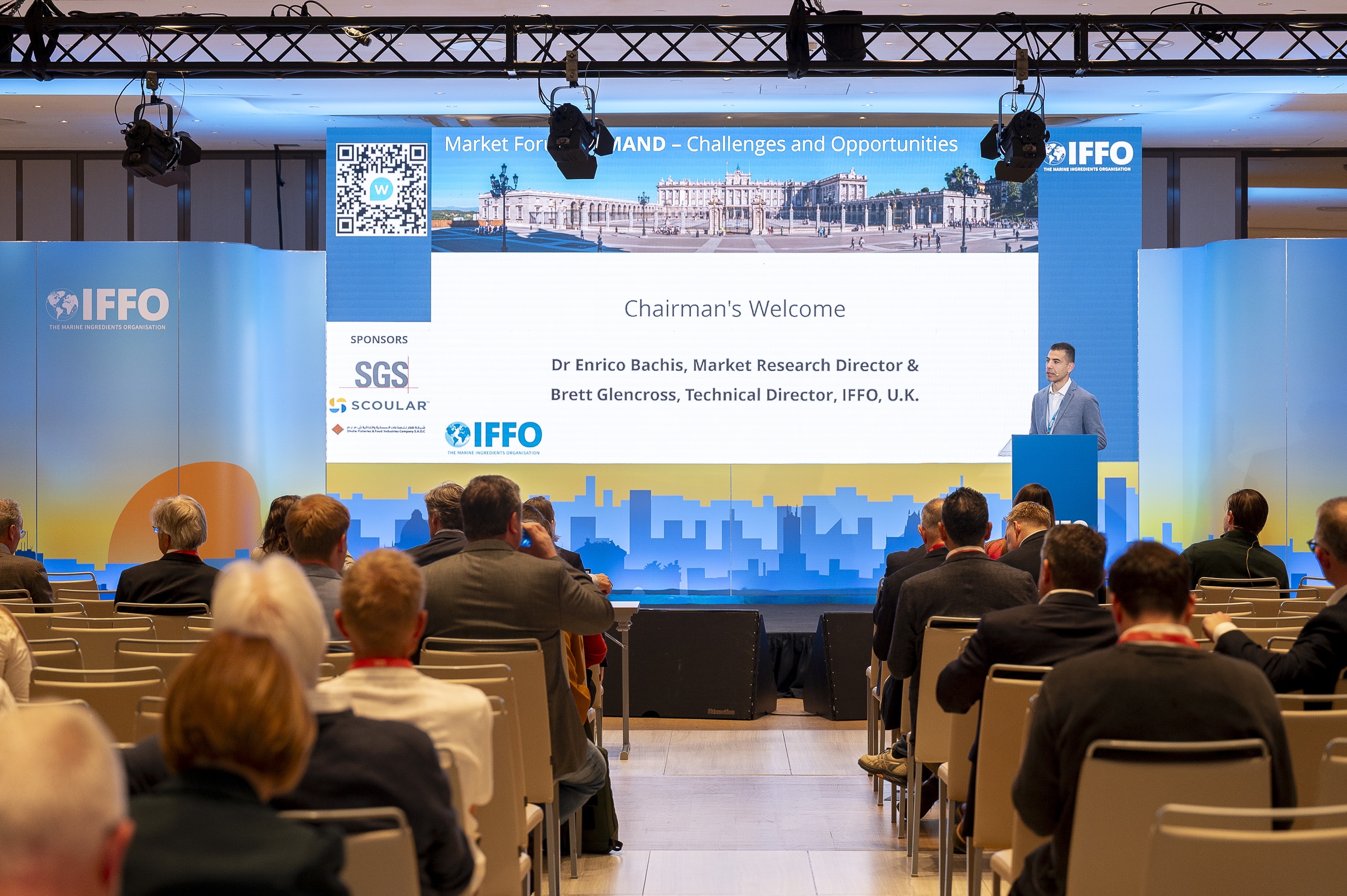
The global seafood challenge
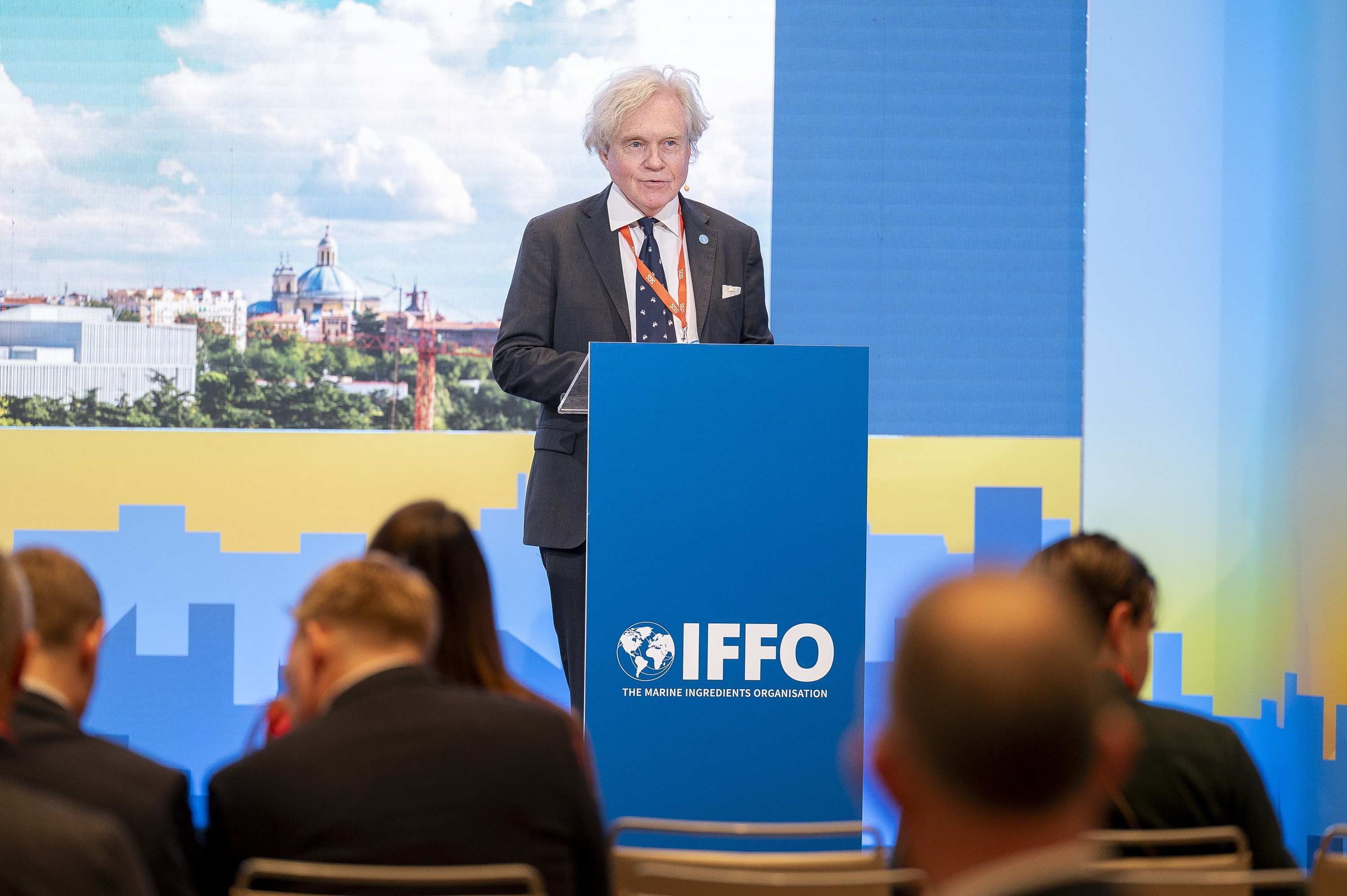 Starting at a global seafood level, Audun Lem, the Deputy Director of Fisheries and Aquaculture Division at UN’s FAO, presented a macro perspective of challenges and opportunities in seafood trade. With seafood production at an all-time high, 2022 data shows for the first time in history that global aquaculture production of animal species surpassed capture production estimated at 91 million tonnes. In fact, from 1961 the total supply of aquatic foods (excluding algae) has increased at an average annual rate of 3%, twice the rate of world’s population growth, thus making net contributions to nutritional improvements. However, Lem added a sobering challenge: “With the world’s population being projected to reach 9.7 billion by 2050, if consumption of aquatic animal foods is to be maintained at current levels, the global supply would require a 22% rise. But consumption rates and future population growth differ between regions. In Africa, a 74% increase in aquatic food supply would be needed to keep up with current per capita consumption rates. Bringing Africa consumption rates to today’s global average of 20.7kg per person in 2050, would require a 285% growth in aquatic animal provision.”
Starting at a global seafood level, Audun Lem, the Deputy Director of Fisheries and Aquaculture Division at UN’s FAO, presented a macro perspective of challenges and opportunities in seafood trade. With seafood production at an all-time high, 2022 data shows for the first time in history that global aquaculture production of animal species surpassed capture production estimated at 91 million tonnes. In fact, from 1961 the total supply of aquatic foods (excluding algae) has increased at an average annual rate of 3%, twice the rate of world’s population growth, thus making net contributions to nutritional improvements. However, Lem added a sobering challenge: “With the world’s population being projected to reach 9.7 billion by 2050, if consumption of aquatic animal foods is to be maintained at current levels, the global supply would require a 22% rise. But consumption rates and future population growth differ between regions. In Africa, a 74% increase in aquatic food supply would be needed to keep up with current per capita consumption rates. Bringing Africa consumption rates to today’s global average of 20.7kg per person in 2050, would require a 285% growth in aquatic animal provision.”
Looking at the utilization of wild caught fish, the apparent human consumption in 2021 was 165mt and 20.7 kg/person. Production not used for direct human consumption has decreased dramatically over the last 70 years, with 33% not going to direct human consumption in 1960s, decreasing to just 11% in 2022. Another efficiency is the increasing use of by-products, with 34% of fishmeal and 53% of fish oil now being produced from by-products. Asia remains the dominant force in aquaculture production, accounting for 92%, followed by Latin America & the Caribbean at 3.3% and Europe at 2.7% in 2022.
“We have to communicate that the volumes of the catches coming from sustainably managed stocks, 77% in 2022, are much bigger than the number of stocks. This shows that fishery management is working. This June at the UN Ocean Conference in Nice, France, FAO will launch an updated methodology on stock assessment. We have increased the number of stocks monitored by FAO, from 500 to 2,000, meaning that the information available on stock assessments will be much more precise and meaningful, with a breakdown on a more precise sub-level.”
Growth in aquaculture
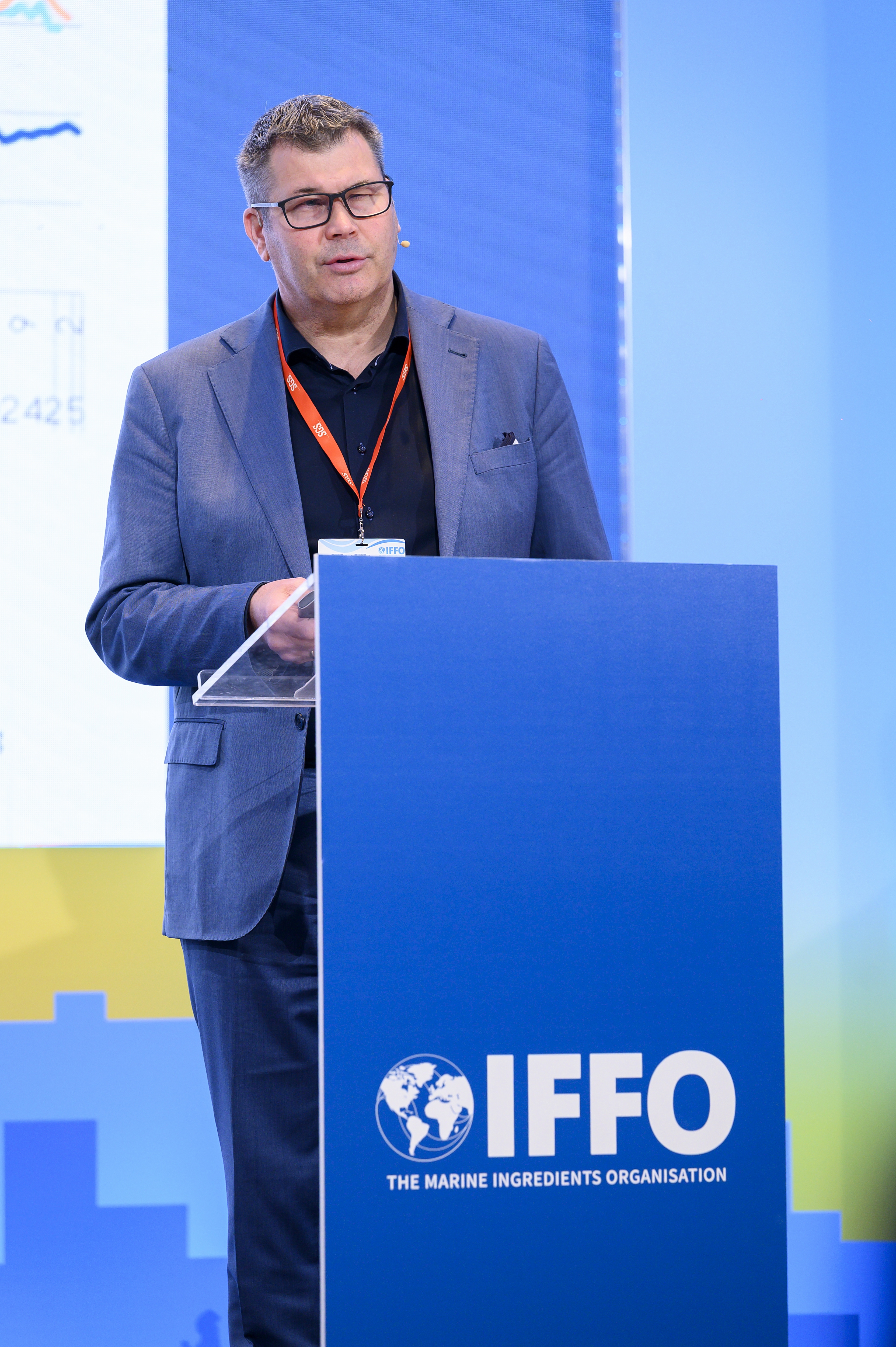 Moving to the aquaculture, Ragnar Nystøyl, the Chief Analyst from Kontali Analyse presented the latest projections for aquaculture production: there is growth, but a declining growth-rate. Looking at pangasius, imports have shifted, reducing in Europe and the US, with prices decreasing since 2022. China still dominates the tilapia export market, but there are two distinct segments where the frozen whole tilapia has been and is still dominated by Africa. North America imports 74% of filleted and prepared tilapia. Moving to shrimp aquaculture, Nystøyl, noted that Vannamei shrimp production has greatly increased over the last 10-12 years, with leading producers being China, India and Ecuador, and stronger market diversification being relevant in this trade and tariff climate.
Moving to the aquaculture, Ragnar Nystøyl, the Chief Analyst from Kontali Analyse presented the latest projections for aquaculture production: there is growth, but a declining growth-rate. Looking at pangasius, imports have shifted, reducing in Europe and the US, with prices decreasing since 2022. China still dominates the tilapia export market, but there are two distinct segments where the frozen whole tilapia has been and is still dominated by Africa. North America imports 74% of filleted and prepared tilapia. Moving to shrimp aquaculture, Nystøyl, noted that Vannamei shrimp production has greatly increased over the last 10-12 years, with leading producers being China, India and Ecuador, and stronger market diversification being relevant in this trade and tariff climate.
The farmed Atlantic salmon sector continues to be dominant, with 6-7 % increase expected for 2025. Challenges to growth remain with feed prices and raw material access, fresh water access, and cost inflation. These are amplified by increasing market ESG and food quality expectations, and government regulations.
Fishmeal use from a feed perspective
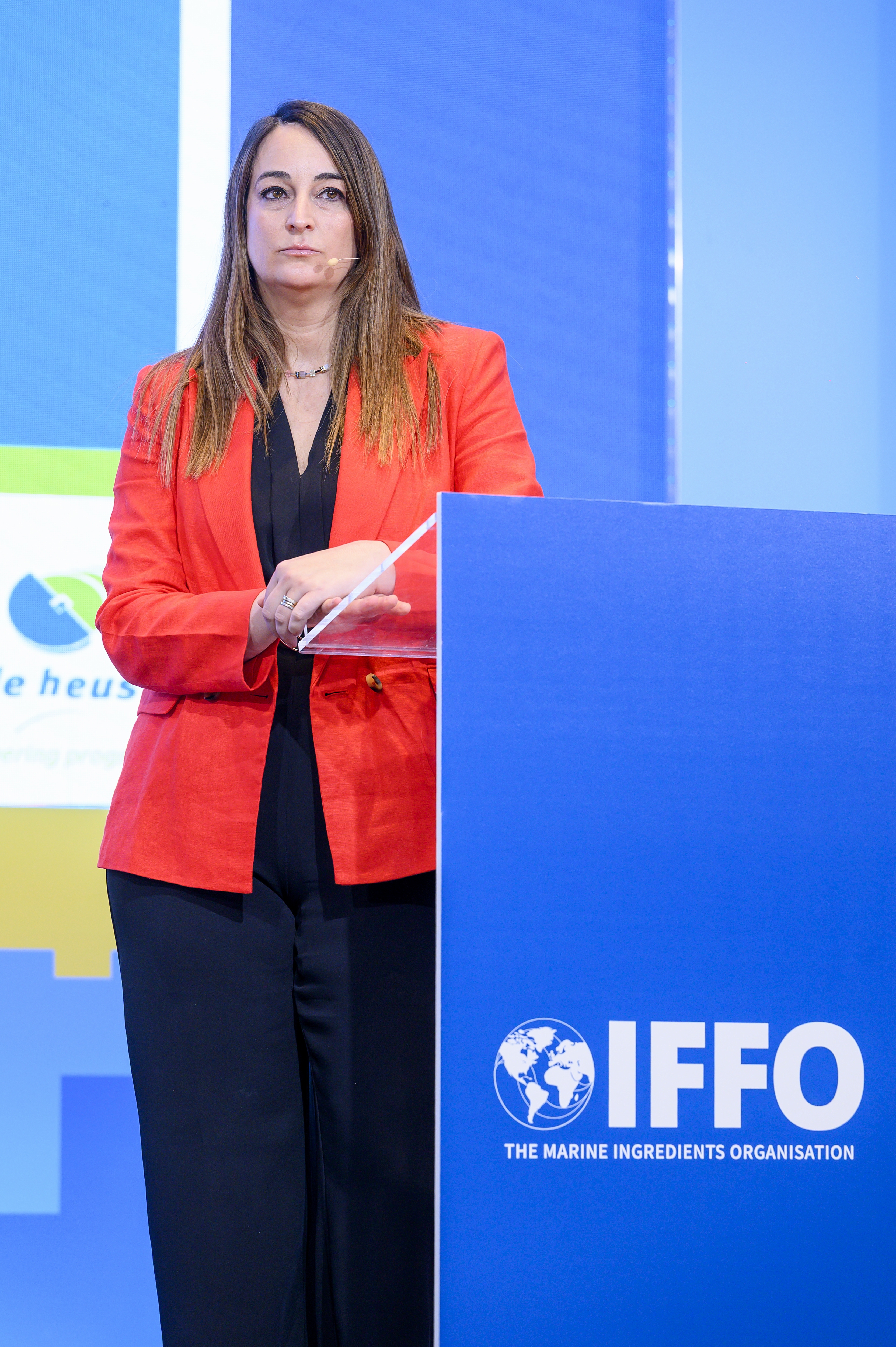 Looking at fishmeal, Julia Mas Muñoz, the Global Aqua Formulation and Product Manager at De Heus Animal Nutrition, and Martijn Rigutto from the Purchasing and Trading department, gave a feed producer’s perspective on market developments. Aquaculture represents 7% of de Heus market segments with 14 aqua production plants. Asia remains the dominant market for fishmeal use, with 63% going to farmed fish, 10% to farmed shrimp, the remaining to swine and poultry. Muñoz noted that feed formulation is about precisely meeting animals' nutritional needs to promote optimal growth and health, while maximizing efficiency and sustainability.
Looking at fishmeal, Julia Mas Muñoz, the Global Aqua Formulation and Product Manager at De Heus Animal Nutrition, and Martijn Rigutto from the Purchasing and Trading department, gave a feed producer’s perspective on market developments. Aquaculture represents 7% of de Heus market segments with 14 aqua production plants. Asia remains the dominant market for fishmeal use, with 63% going to farmed fish, 10% to farmed shrimp, the remaining to swine and poultry. Muñoz noted that feed formulation is about precisely meeting animals' nutritional needs to promote optimal growth and health, while maximizing efficiency and sustainability.
Fishmeal’s benefits as a feed ingredient include, good palatability, the high digestible protein content, balanced bioavailable amino acids profile with an absence of anti-nutritional factors and an essential source of omega-3s (EPA & DHA), along with minerals vitamins, nucleotides, phospholipids, and sterols.
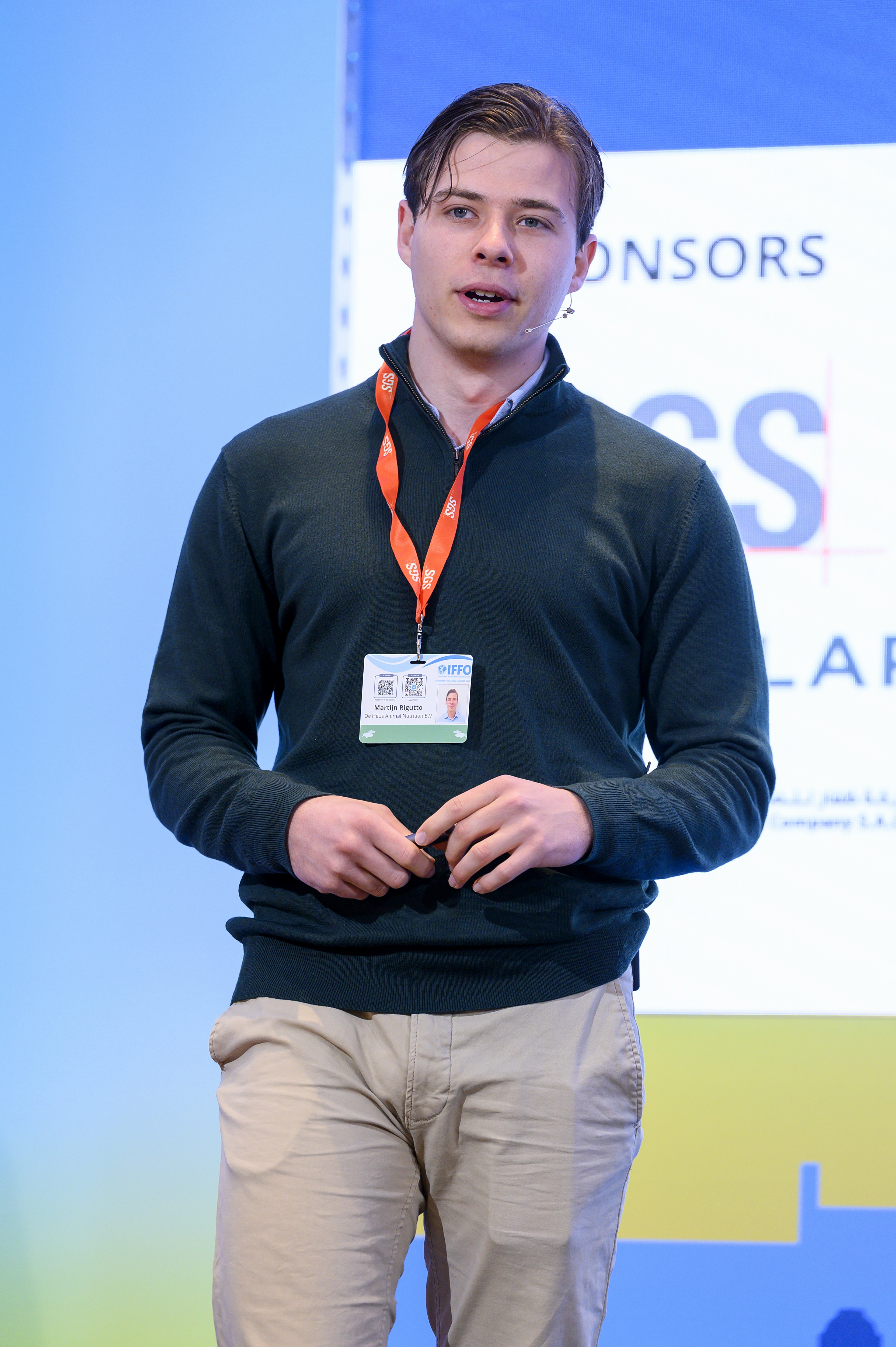 However, there are challenges with its use from customer perception and cost-price competitiveness, and the available alternative ingredients. Muñoz then explored the variation in quality, along with the extensive ingredient evaluation and shipping regulations, noting that it can be challenging to source fishmeal that meets all these requirements. Use of fishmeal is projected to continue to grow in Asia, with increasing focus on sustainability certifications and the use of alternative ingredients.
However, there are challenges with its use from customer perception and cost-price competitiveness, and the available alternative ingredients. Muñoz then explored the variation in quality, along with the extensive ingredient evaluation and shipping regulations, noting that it can be challenging to source fishmeal that meets all these requirements. Use of fishmeal is projected to continue to grow in Asia, with increasing focus on sustainability certifications and the use of alternative ingredients.
China update
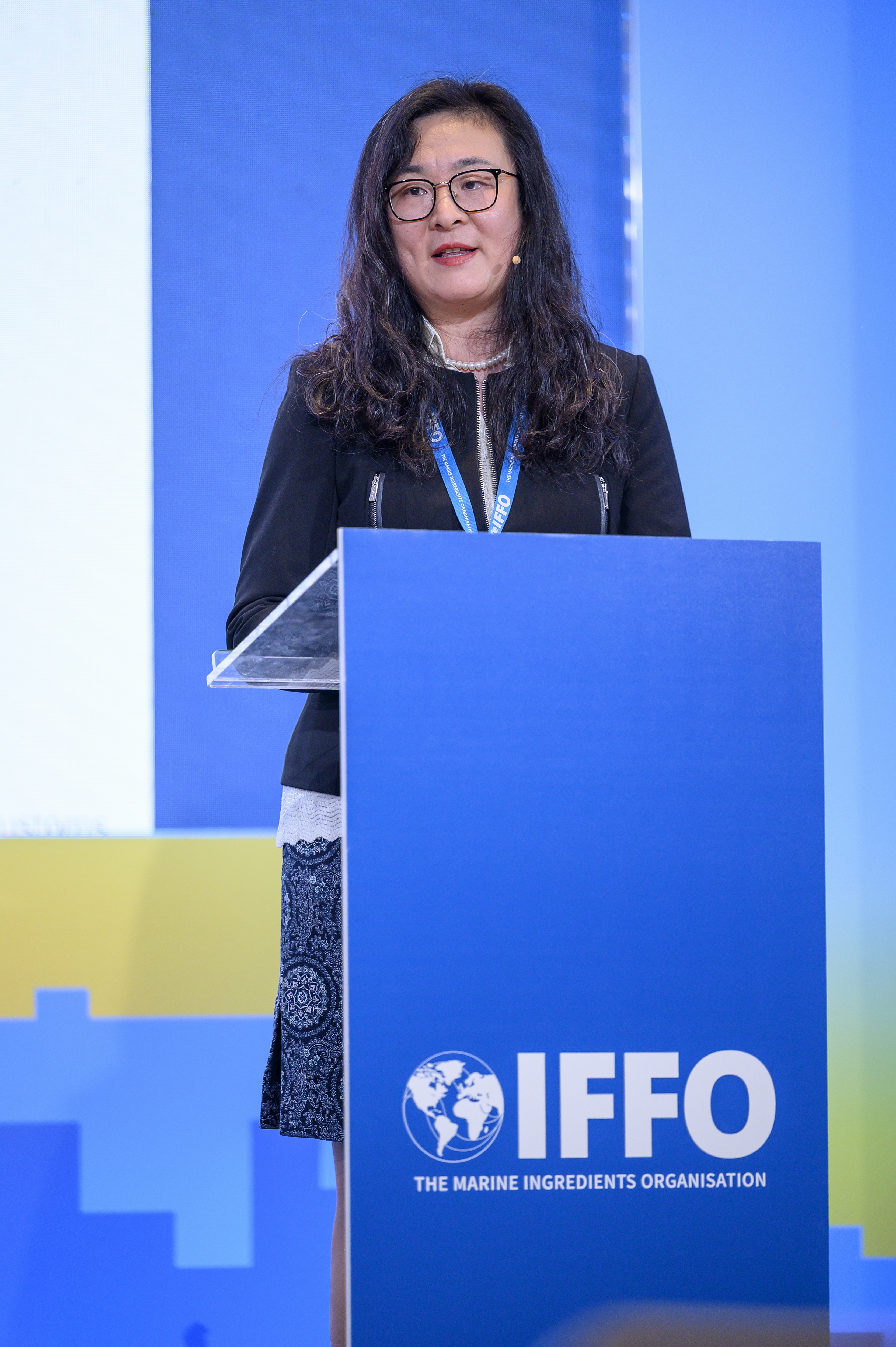 IFFO’s China Director, Maggie Xu, provided an update on the China market, looking at import and export drivers. Starting with Chinese regulations, Xu noted that there’s a catalogue of feed ingredients which are currently under revision and that the National Standard on fish oil as a health food ingredients is also under development. GACC (General Administration of Customs China) is currently optimising and streamlining its procedures, and strengthening law enforcement, and Xu also noted the importance of compliance with feed hygiene standard (GB 13078). Fishmeal production in China reduced significantly in 2024, with Russian sardine imports for fishmeal production decreasing along with a growth in fishmeal from tilapia by-products. Fish oil production also dropped significantly in 2024, with 44% now coming from by-products. With Peru’s rebound in fishmeal and fish oil production in 2024 as well as diversified import sources, a significant increase in imports is reported for 2024 compared with 2023. Fish oil exports are moving more to direct human consumption to support an increasingly aging population, and the fish oil imports are coming from increasingly diverse sources and less reliant on Peru.
IFFO’s China Director, Maggie Xu, provided an update on the China market, looking at import and export drivers. Starting with Chinese regulations, Xu noted that there’s a catalogue of feed ingredients which are currently under revision and that the National Standard on fish oil as a health food ingredients is also under development. GACC (General Administration of Customs China) is currently optimising and streamlining its procedures, and strengthening law enforcement, and Xu also noted the importance of compliance with feed hygiene standard (GB 13078). Fishmeal production in China reduced significantly in 2024, with Russian sardine imports for fishmeal production decreasing along with a growth in fishmeal from tilapia by-products. Fish oil production also dropped significantly in 2024, with 44% now coming from by-products. With Peru’s rebound in fishmeal and fish oil production in 2024 as well as diversified import sources, a significant increase in imports is reported for 2024 compared with 2023. Fish oil exports are moving more to direct human consumption to support an increasingly aging population, and the fish oil imports are coming from increasingly diverse sources and less reliant on Peru.
In terms of marine ingredients use in aquaculture, Xu discussed that there are growth potentials in offshore farming and in-land pond farming, highlighting white leg shrimp production as having a promising outlook in 2025. In the pig sector, prices have improved to support farming profits, with government focus on quality enhancement. Regarding global tariffs wars, Xu stated that this is expected to have limited impacts on China’s marine ingredients market.
Advancing EU Aquaculture
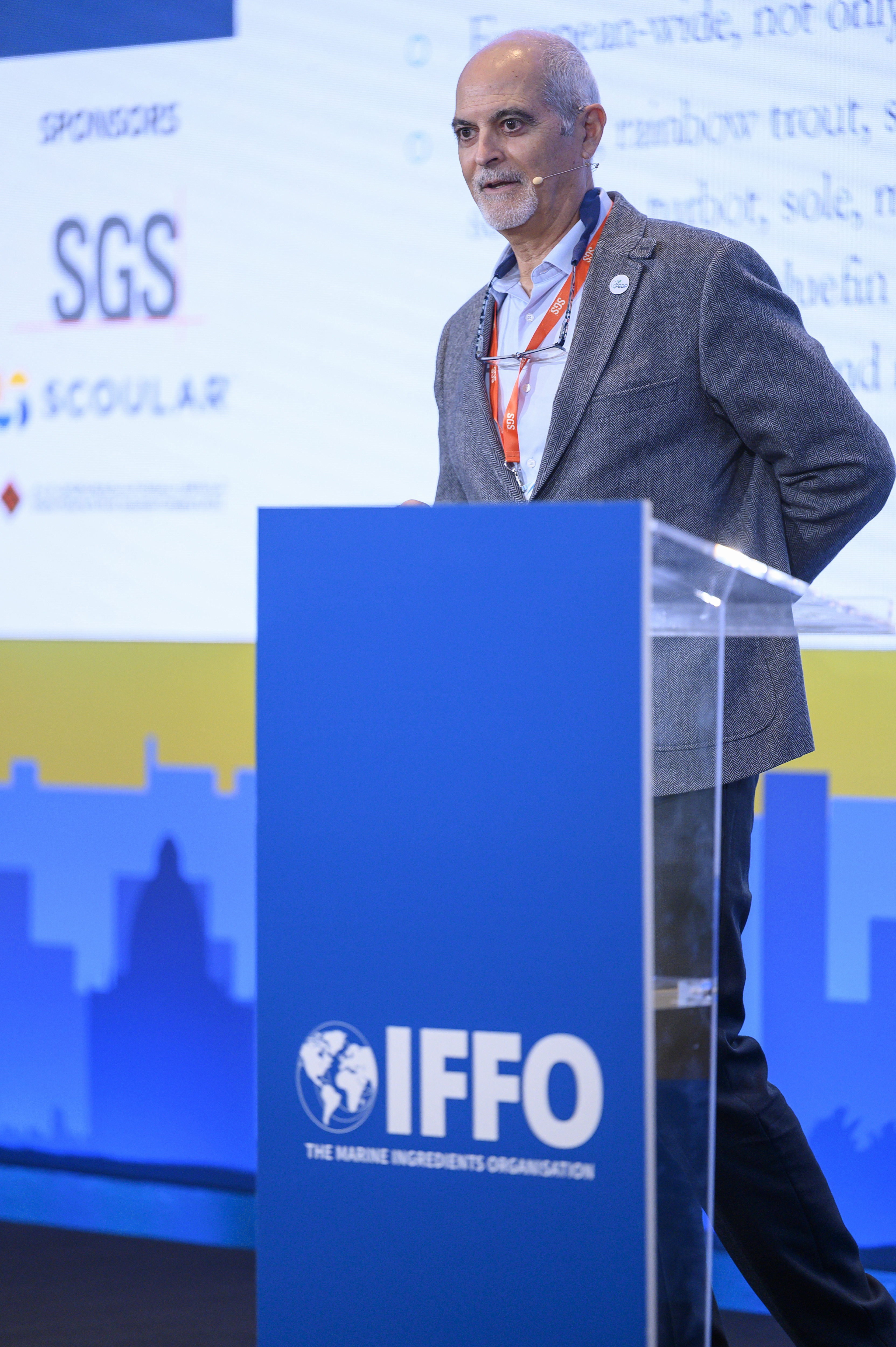 Moving to the EU market, Javier Ojeda Gonzalez-Posada, the Secretary General of the Federation of European Aquaculture Producers (FEAP), noted that the sector is recognised for its high levels of innovation and strong environmental sustainability standards. However, production growth remains limited since year 2000, with EU aquaculture production reaching 1.09 Mt, with a total first sale value of EUR 4.87 billion in 2022.
Moving to the EU market, Javier Ojeda Gonzalez-Posada, the Secretary General of the Federation of European Aquaculture Producers (FEAP), noted that the sector is recognised for its high levels of innovation and strong environmental sustainability standards. However, production growth remains limited since year 2000, with EU aquaculture production reaching 1.09 Mt, with a total first sale value of EUR 4.87 billion in 2022.
Ojeda stated that consumers are increasingly calling for responsible aquaculture, which in the EU mainly refer to environmental issues, but fish welfare is also now being discussed, and this will likely expand to feed quality. As a diverse region, there are varying national approaches to food certification, environmental sensitivity, and animal welfare, which varying also leads to fragmented or inconsistent requirements for fish feed certification. “Development in the sector has been slowed by an over precautionary regulatory EU legal framework on environmental matters, making obtaining licenses for new farms particularly difficult” he noted. Going forward, Ojeda noted that there is new focus on enhancing competitiveness and investment in farming low-trophic (non-fed) aquatic species, which adds further complexities to the finfish aquaculture sector and its broader societal acceptance. He concluded by saying that “FEAP insists to the European Commission on the importance of following the FAO Blue Transformation strategy: sustainable intensification of aquaculture (including finfish) is to become a key element in feeding the world”.
Petfood and marine ingredients
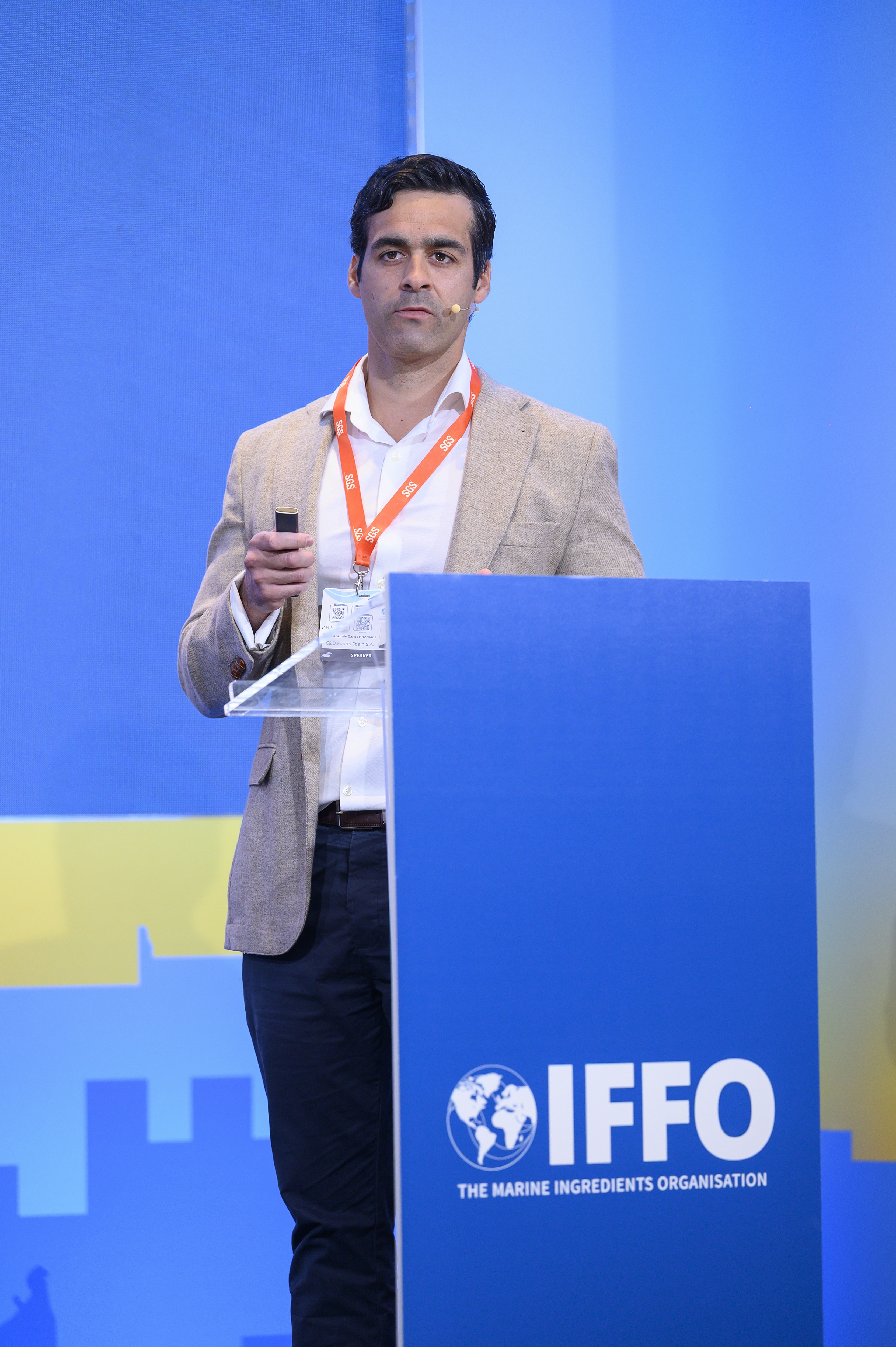 Moving to petfood, Robert John Reynolds, the Director General of C&D Foods, and Jose Antonio Zalvide, Purchasing Director, stated that the company uses marine ingredients as a source of protein – mostly salmon from Norway and Baltic countries, tuna from Spain, white fish and herring from Denmark - and salmon oil as a source of EPA and DHA. EPA &DHA in dry petfood offer anti-inflammatory effects, assisting in slowing retinal degradation, improving cognitive function, insulin sensitivity, and regulating the immune system. Digests are used to make petfood palatable, in a liquid format for dogs and powder format for cats. The sector is growing by 2% in volume annually, with fishmeal and other marine products growing within the protein category. On global trends, Zalvide added that there is a humanisation trend, with increasing demand for premium products, and marine ingredients are gaining importance. Regarding certification, Zalvide noted that the cost of accrediting sustainable products in pet food formulas is a key factor to consider in the tender process. He added that sustainable meal and oil options, such as microalgae are limited in formulas due to their high cost.
Moving to petfood, Robert John Reynolds, the Director General of C&D Foods, and Jose Antonio Zalvide, Purchasing Director, stated that the company uses marine ingredients as a source of protein – mostly salmon from Norway and Baltic countries, tuna from Spain, white fish and herring from Denmark - and salmon oil as a source of EPA and DHA. EPA &DHA in dry petfood offer anti-inflammatory effects, assisting in slowing retinal degradation, improving cognitive function, insulin sensitivity, and regulating the immune system. Digests are used to make petfood palatable, in a liquid format for dogs and powder format for cats. The sector is growing by 2% in volume annually, with fishmeal and other marine products growing within the protein category. On global trends, Zalvide added that there is a humanisation trend, with increasing demand for premium products, and marine ingredients are gaining importance. Regarding certification, Zalvide noted that the cost of accrediting sustainable products in pet food formulas is a key factor to consider in the tender process. He added that sustainable meal and oil options, such as microalgae are limited in formulas due to their high cost.
Aquaculture feed formulation tools
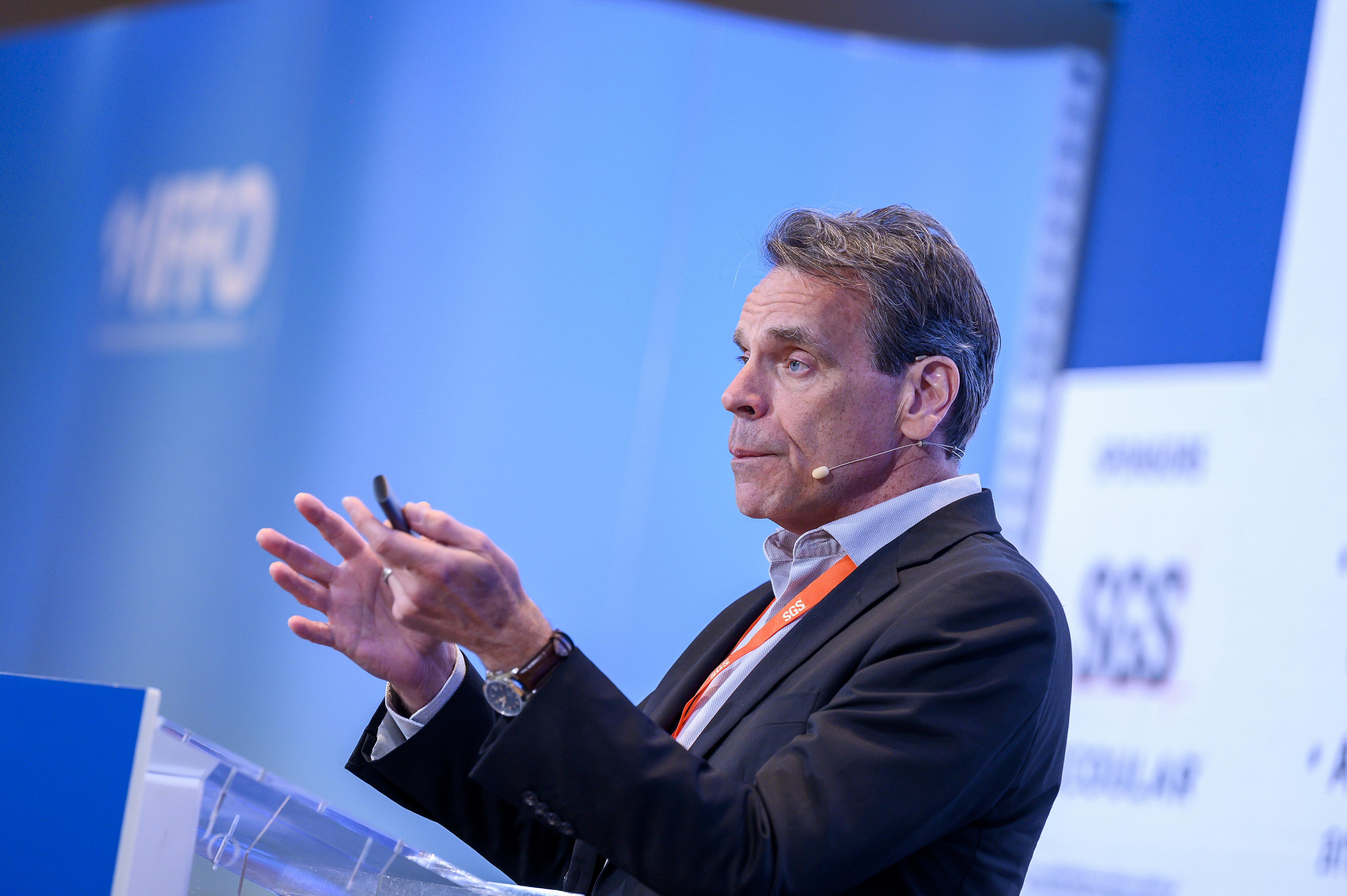 Looking at feed formulation, Dominique Bureau, the Chief Scientific Officer and Co-Founder at Wittaya Aqua, explored the unique complexities of the aquafeed industry. Feed costs represents a very large proportion (50%+) of production cost in aquaculture, with several types of feeds produced using different processing techniques for multitude of species, production conditions, challenges and market demands. Bureau noted that there is a reliance on a relatively large number of ingredients and feed additives of different origins (local, imported), with the aquaculture feed market being highly fragmented. “You have to understand your ingredients and establish a feedback loop”.
Looking at feed formulation, Dominique Bureau, the Chief Scientific Officer and Co-Founder at Wittaya Aqua, explored the unique complexities of the aquafeed industry. Feed costs represents a very large proportion (50%+) of production cost in aquaculture, with several types of feeds produced using different processing techniques for multitude of species, production conditions, challenges and market demands. Bureau noted that there is a reliance on a relatively large number of ingredients and feed additives of different origins (local, imported), with the aquaculture feed market being highly fragmented. “You have to understand your ingredients and establish a feedback loop”.
Tracking the nutritional supply chain, from ingredients, to feed, to fish is very important, notably to objectively monitor progress and report to third parties (e.g. certification programmes). Bureau highlighted a range of tools to track ingredient use and characteristics, formulate feeds to different specifications, and track performance and sustainability metrics (e.g. carbon footprint, waste outputs) for commercial production lots. The overall aim of these tools is to create a feedback loop between feed composition and field performance, helping fine-tune feed formulations to improve sustainability and profitability of aquaculture operations.
Omega-3 and fish nutrition
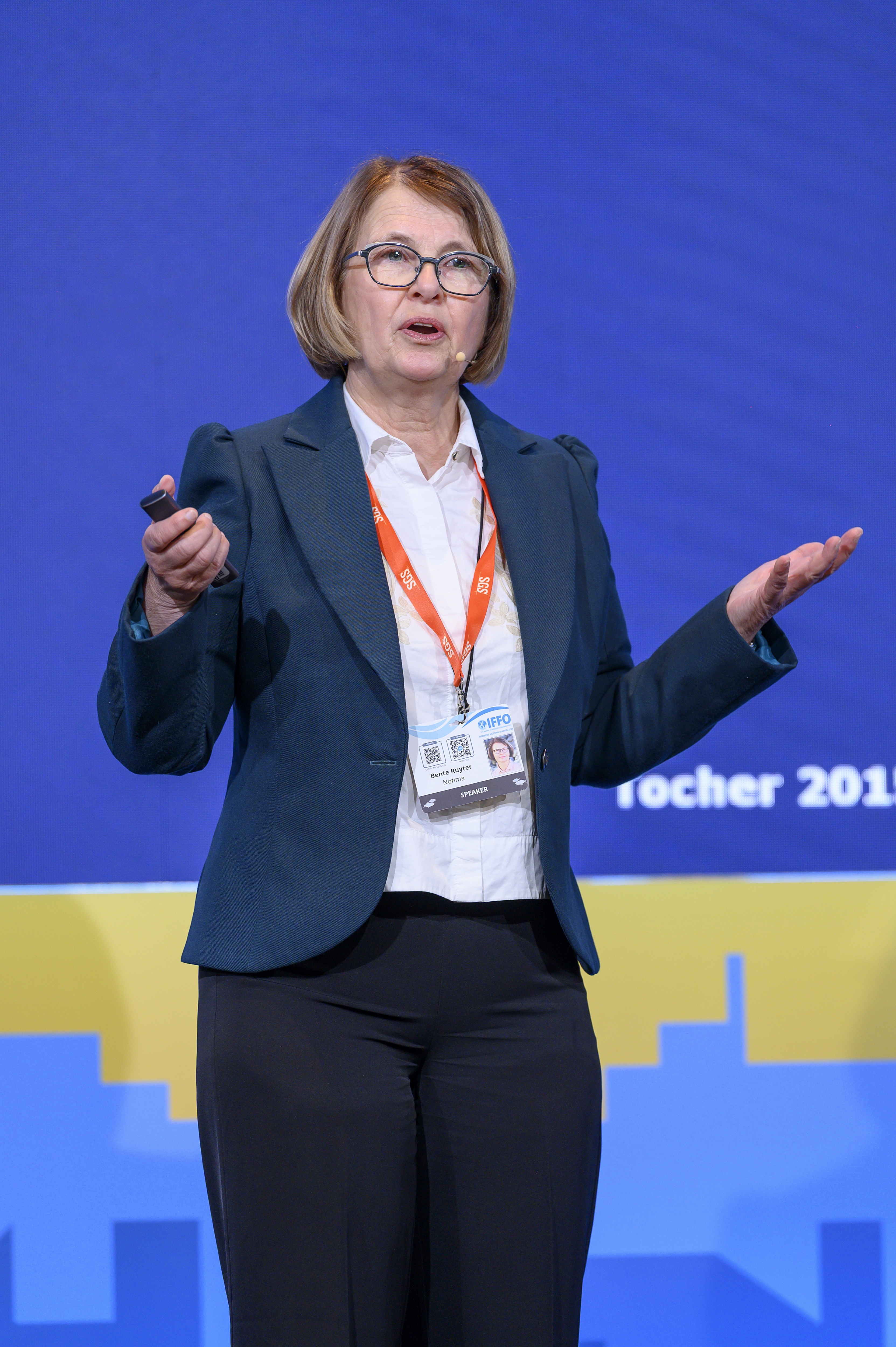 Looking at the complex dietary needs of Atlantic salmon, Bente Ruyter, Senior scientist at Nofima and Professor II at University of Life Sciences (NMBU), explored recent trials showing the complex needs of the fish. Ruyter noted that the trials showed salmon fed higher EPA+DHA levels grow larger and develop better fillet colour, with EPA being crucial for energy metabolism and immune responses, and DHA being key for cell membrane structure. Reduced fish oil in feed decreases both omega-3s and saturated fatty acids, the latter also being important for omega-3 retention in tissues. She added that research also demonstrates a synergistic relationship between zinc and omega-3s, enhancing scale development, bone density, and wound healing. Ruyter concluded by stating that these findings underscore the delicate nutrient balance required to optimize salmon health and product quality in aquaculture, but there is still more research needed. She added that we still do not know the exact dietary requirements of EPA, DHA, saturated fatty acids and cholesterol in Atlantic salmon under different environmental conditions and life stages.
Looking at the complex dietary needs of Atlantic salmon, Bente Ruyter, Senior scientist at Nofima and Professor II at University of Life Sciences (NMBU), explored recent trials showing the complex needs of the fish. Ruyter noted that the trials showed salmon fed higher EPA+DHA levels grow larger and develop better fillet colour, with EPA being crucial for energy metabolism and immune responses, and DHA being key for cell membrane structure. Reduced fish oil in feed decreases both omega-3s and saturated fatty acids, the latter also being important for omega-3 retention in tissues. She added that research also demonstrates a synergistic relationship between zinc and omega-3s, enhancing scale development, bone density, and wound healing. Ruyter concluded by stating that these findings underscore the delicate nutrient balance required to optimize salmon health and product quality in aquaculture, but there is still more research needed. She added that we still do not know the exact dietary requirements of EPA, DHA, saturated fatty acids and cholesterol in Atlantic salmon under different environmental conditions and life stages.
Fish oil and Omega-3 markets
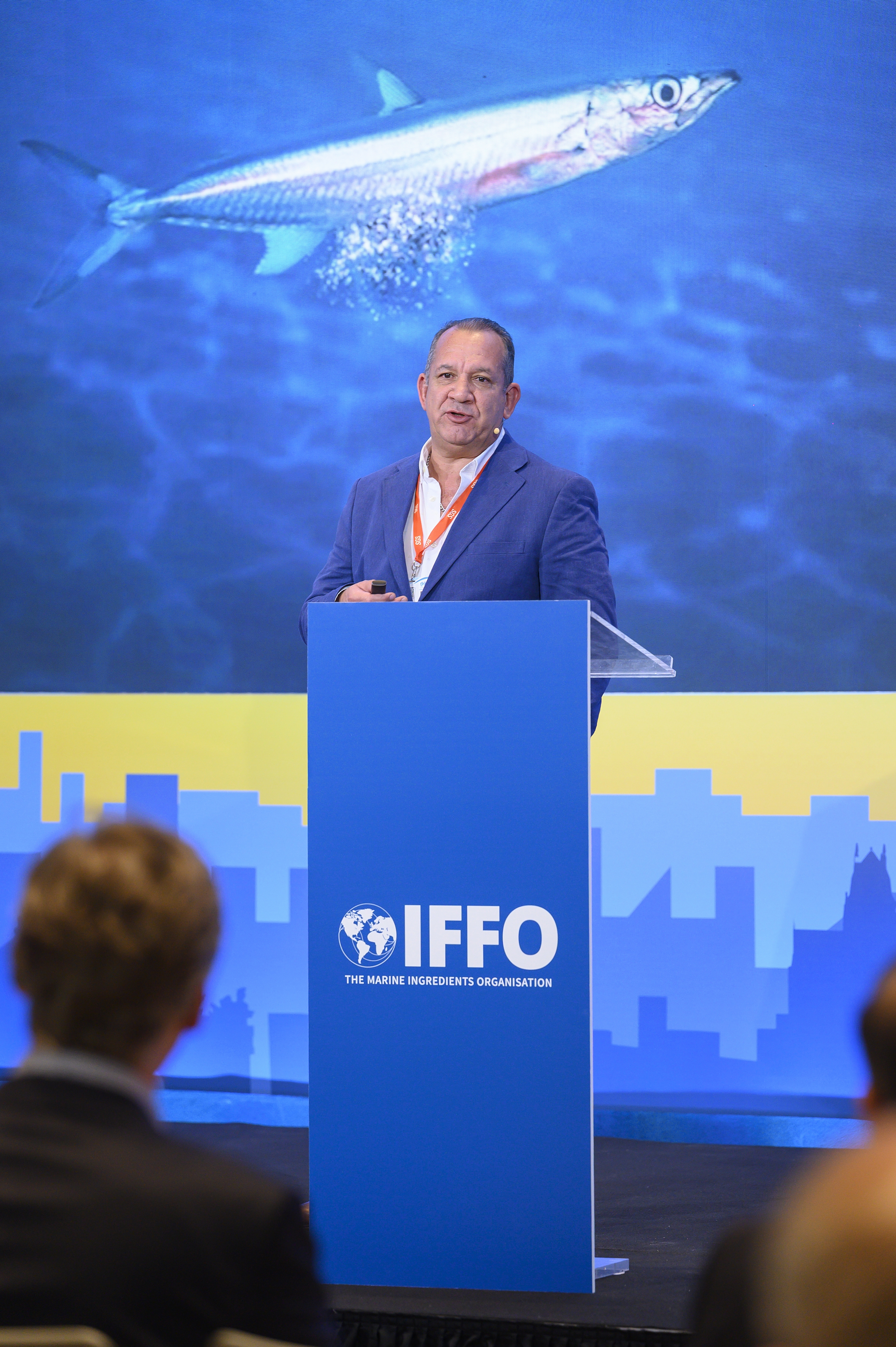 Looking at production and consumption trends for fish oil, Jorge Garcia Herz, CEO of Marex Global Sourcing, summarised recent global fish oil supply trends as being stable, with a recovery in salmon feed and continuous growth in pet food markets. Herz noted that price stability is back to 2012/2022 levels, with a balanced outlook and R&D is key in maximization of circular oils going forward.
Looking at production and consumption trends for fish oil, Jorge Garcia Herz, CEO of Marex Global Sourcing, summarised recent global fish oil supply trends as being stable, with a recovery in salmon feed and continuous growth in pet food markets. Herz noted that price stability is back to 2012/2022 levels, with a balanced outlook and R&D is key in maximization of circular oils going forward.
The omega-3 markets have seen similar stability as the market recovers from El Niño, with Aldo Bernasconi, the Vice President of Data Science at GOED, providing an update. Growth in the omega-3 markets is expected to continue at an average annual rate of 5.6% until 2027, with the fastest growing volume in China and India.
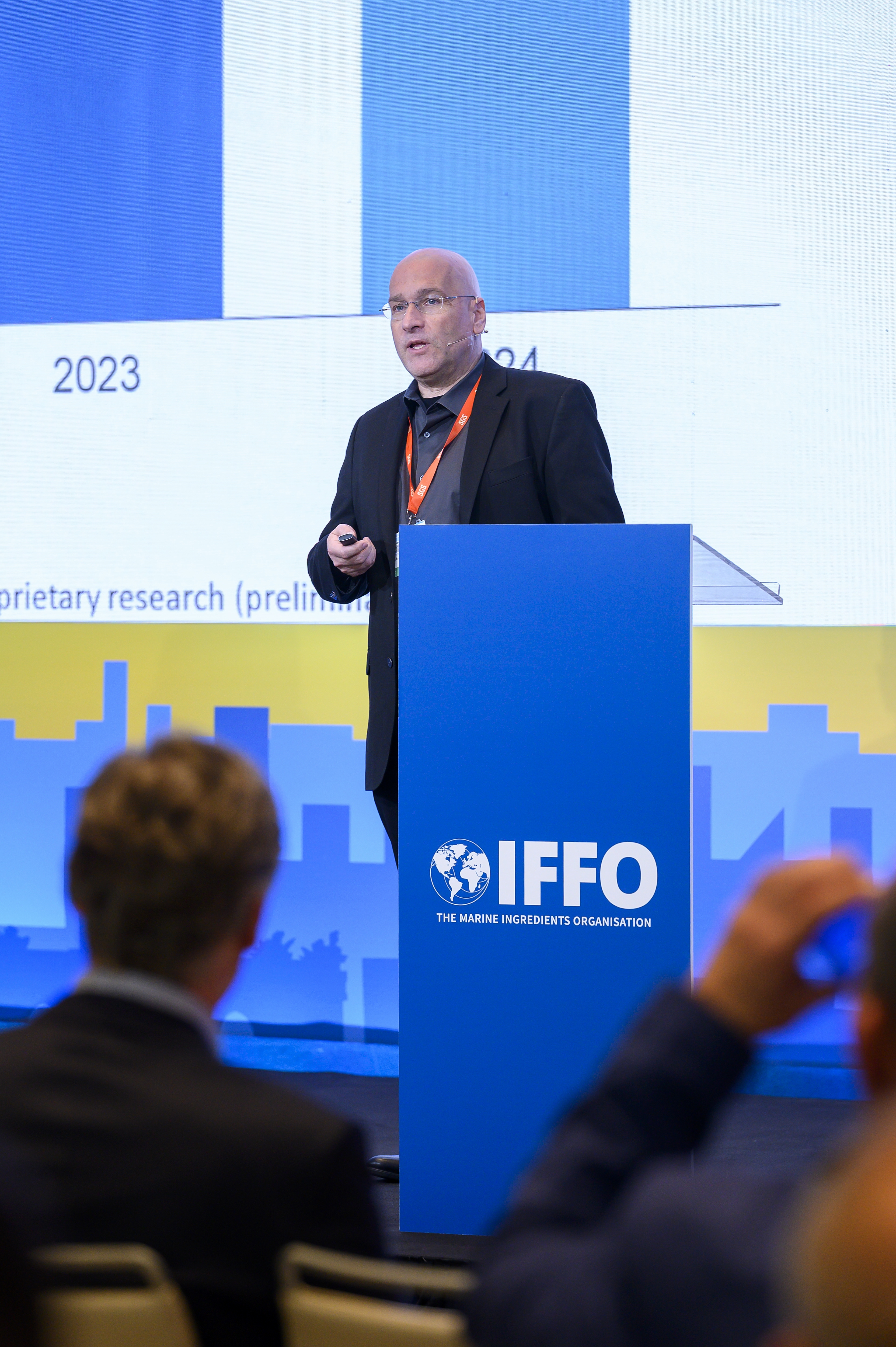 Bernasconi noted that growth in Latin America is in dietary supplements and pet nutrition. For crude oil, he summarized that reduced supply and record fish oil prices in 2023 and 2024 resulted in an increased reliance on alternative sources, changes in production practices and in the formulation of products sold. Human consumption accounted for 76.2% of the crude oil demand.
Bernasconi noted that growth in Latin America is in dietary supplements and pet nutrition. For crude oil, he summarized that reduced supply and record fish oil prices in 2023 and 2024 resulted in an increased reliance on alternative sources, changes in production practices and in the formulation of products sold. Human consumption accounted for 76.2% of the crude oil demand.
Concluding the meeting, Petter M. Johannessen, Director General of IFFO, highlighted the exciting opportunities ahead for the marine ingredients industry: “The global perspectives for aquaculture are promising. This expansion is not just necessary; it is achievable, thanks to the advancements in responsible practices and innovation. Fishery management is working. This is a testament to the effectiveness of science-based policies and industry collaboration”.
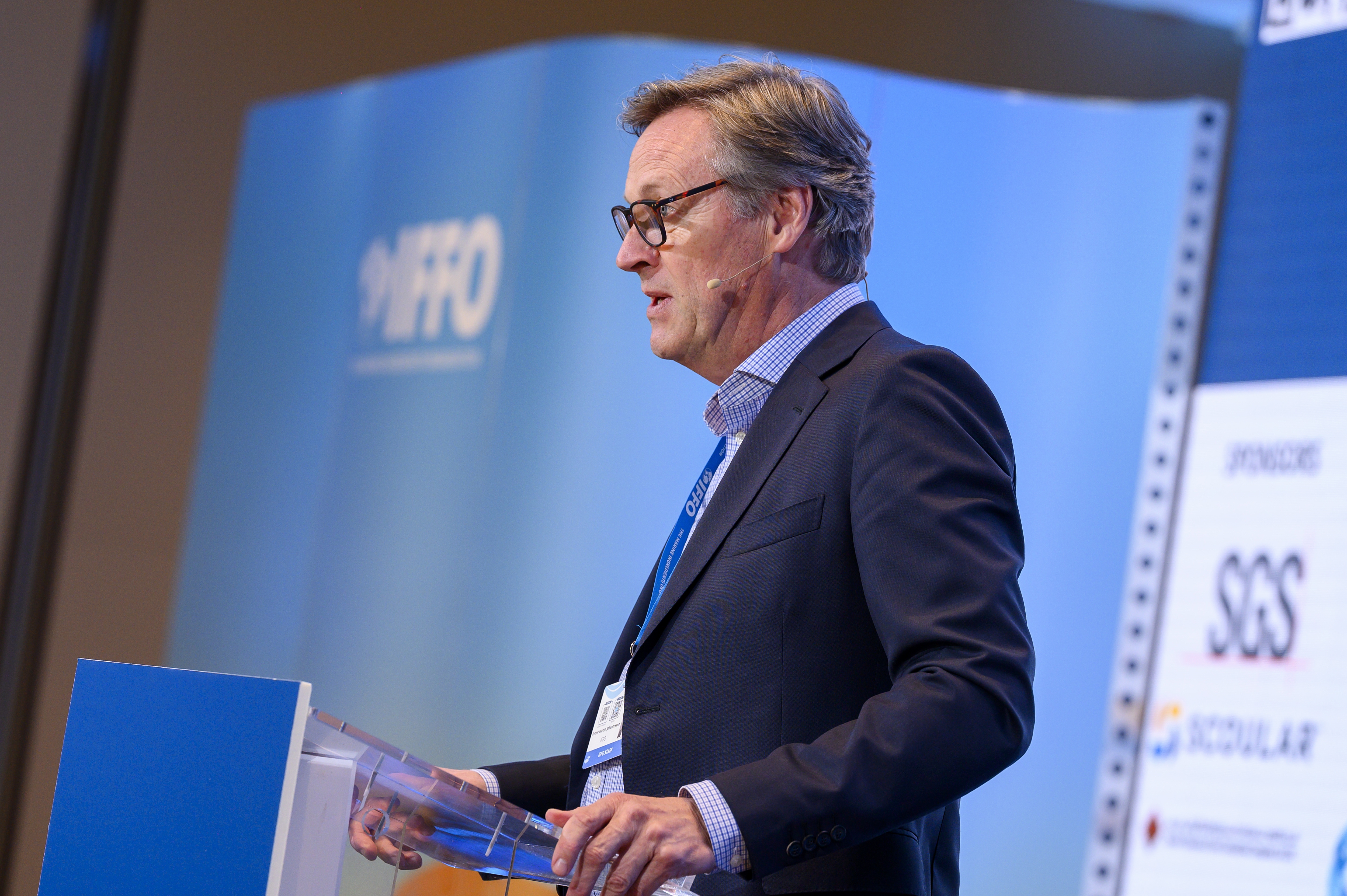 This meeting and associated side events underlined the growing efficiency in raw material use as a direct result of precision nutrition, which has become a cornerstone of feed formulation. With this approach, marine ingredients play a strategic role at key stages of fish growth. Finally, the circularity story is one of the most inspiring contributions to our industry and to aquaculture as a whole. The next IFFO meeting will be its Annual Conference in Tokyo in October.
This meeting and associated side events underlined the growing efficiency in raw material use as a direct result of precision nutrition, which has become a cornerstone of feed formulation. With this approach, marine ingredients play a strategic role at key stages of fish growth. Finally, the circularity story is one of the most inspiring contributions to our industry and to aquaculture as a whole. The next IFFO meeting will be its Annual Conference in Tokyo in October.








